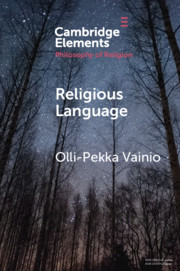Element contents
Religious Language
Published online by Cambridge University Press: 02 December 2020
Summary
- Type
- Element
- Information
- Online ISBN: 9781108668224Publisher: Cambridge University PressPrint publication: 24 December 2020
Bibliography
- 14
- Cited by

